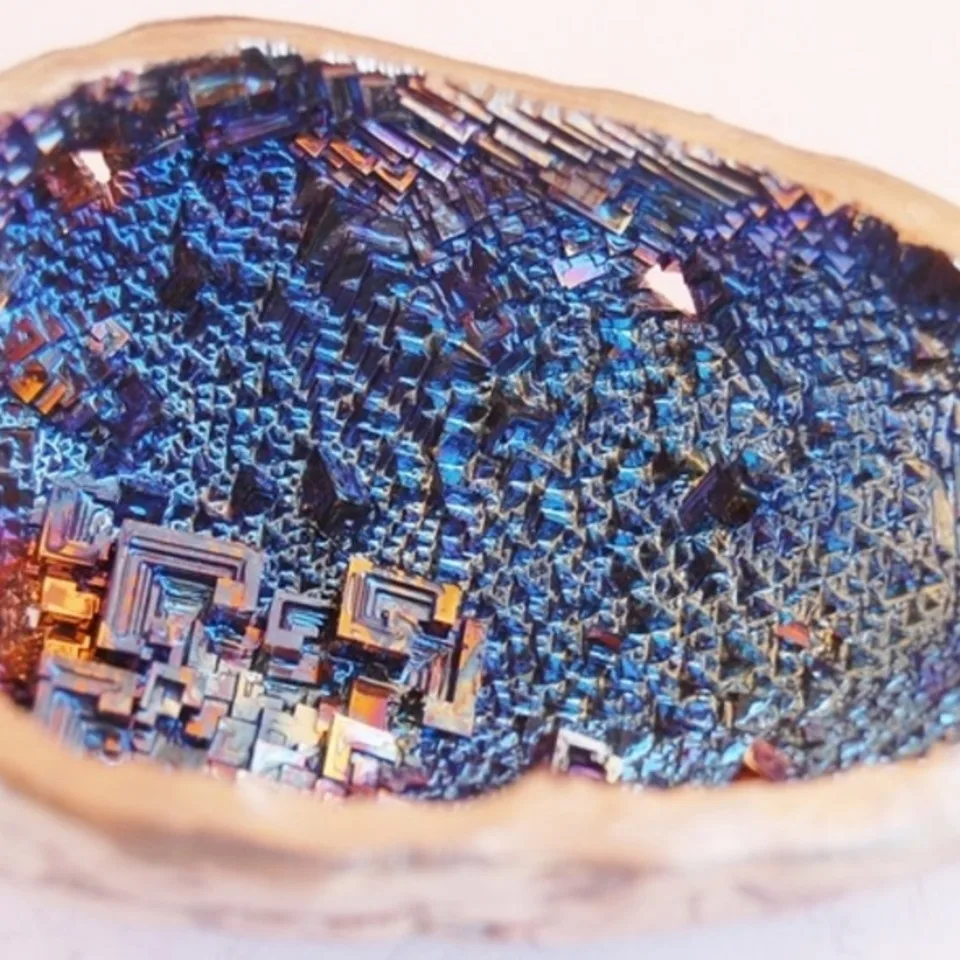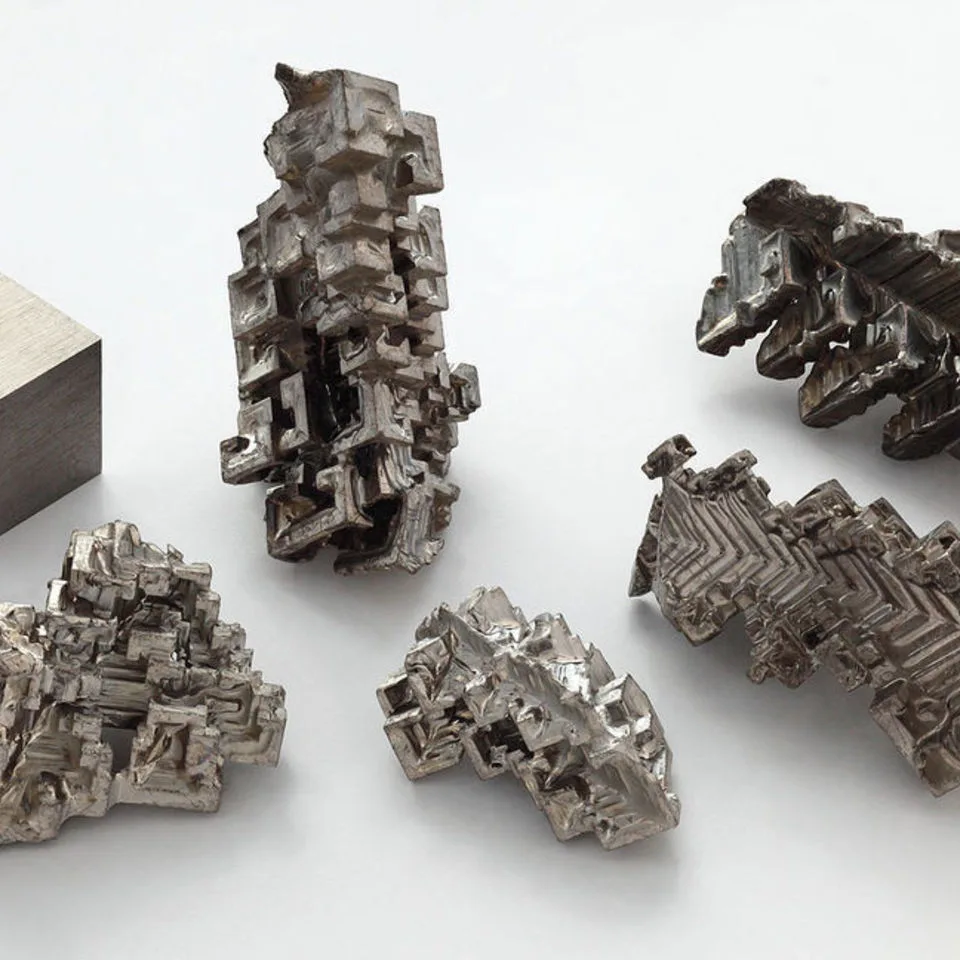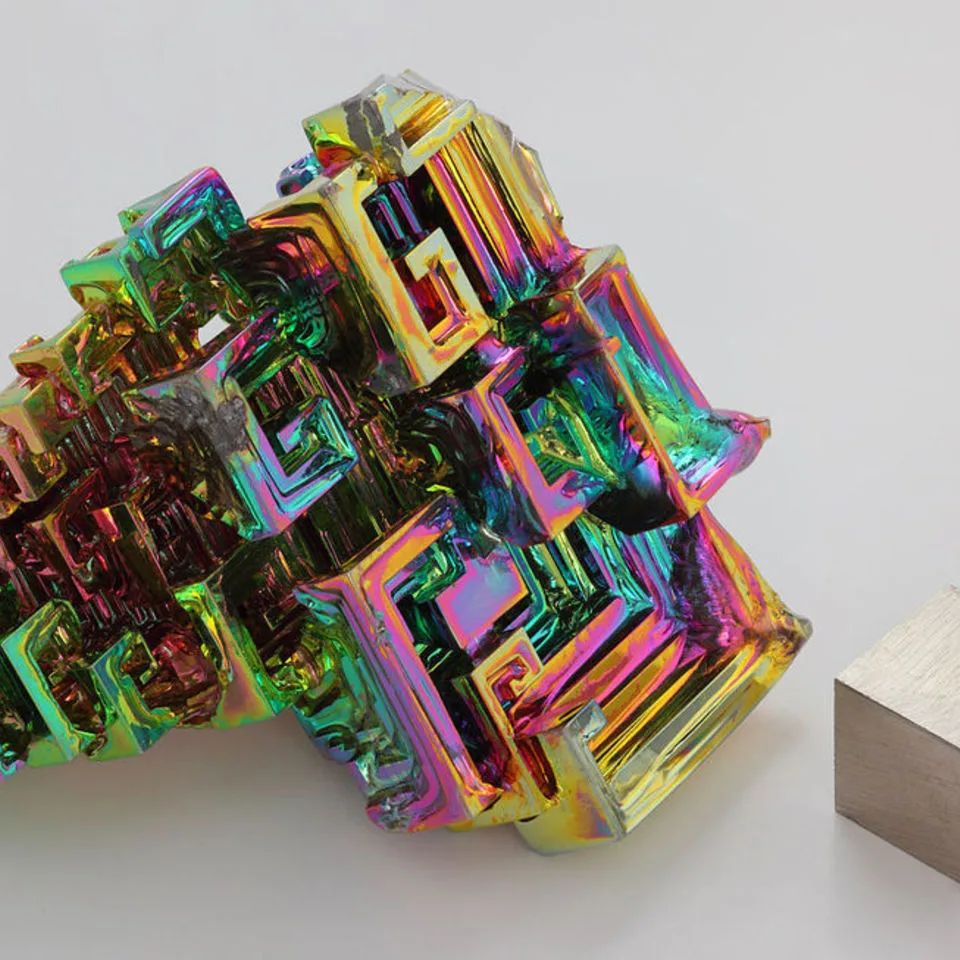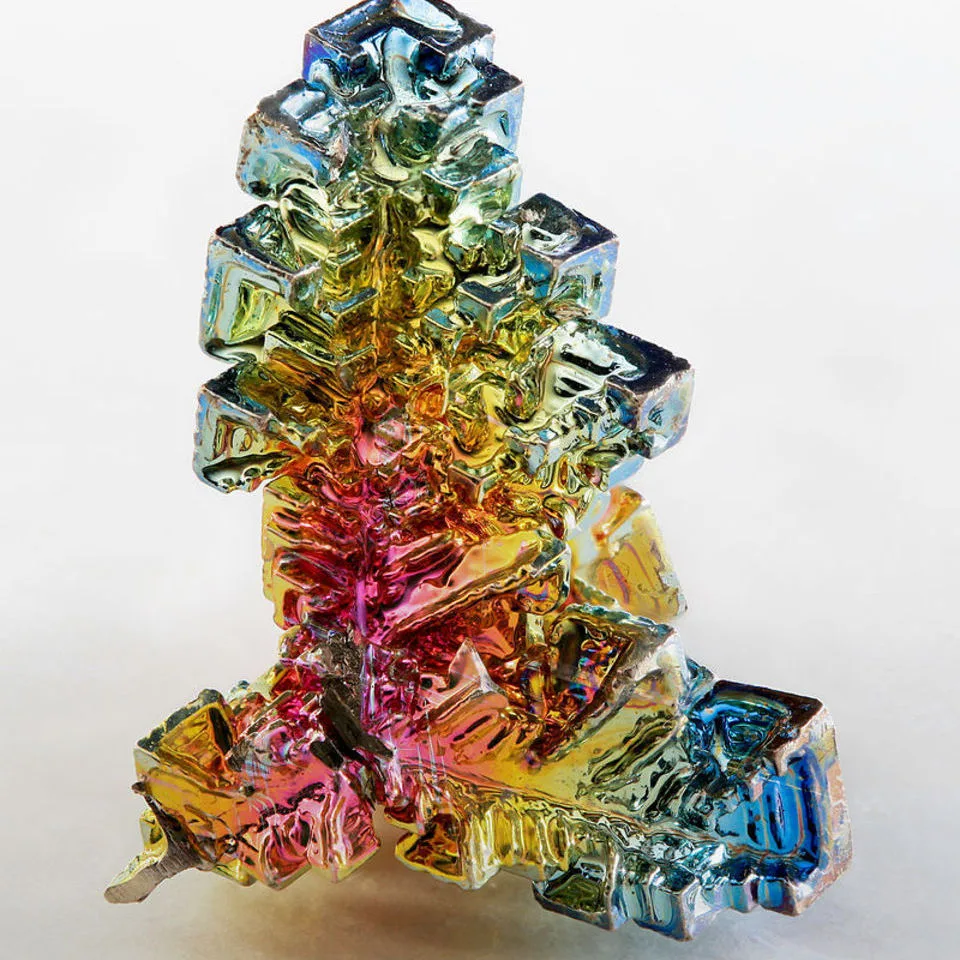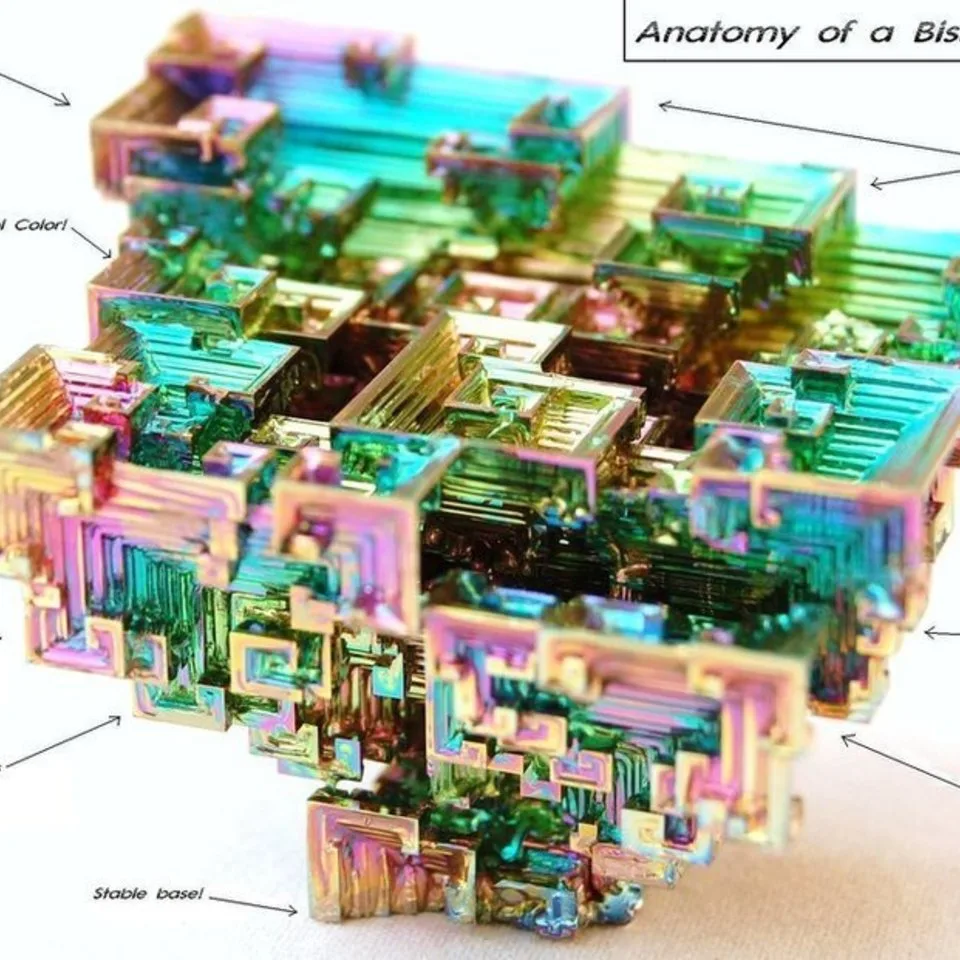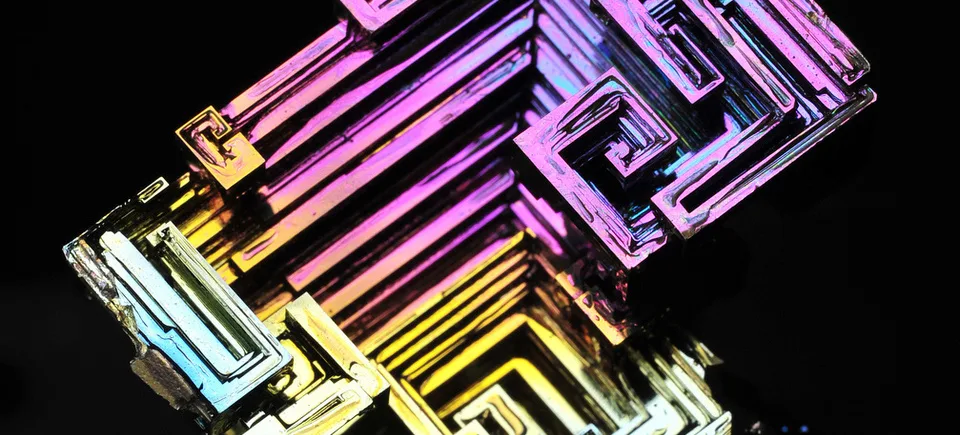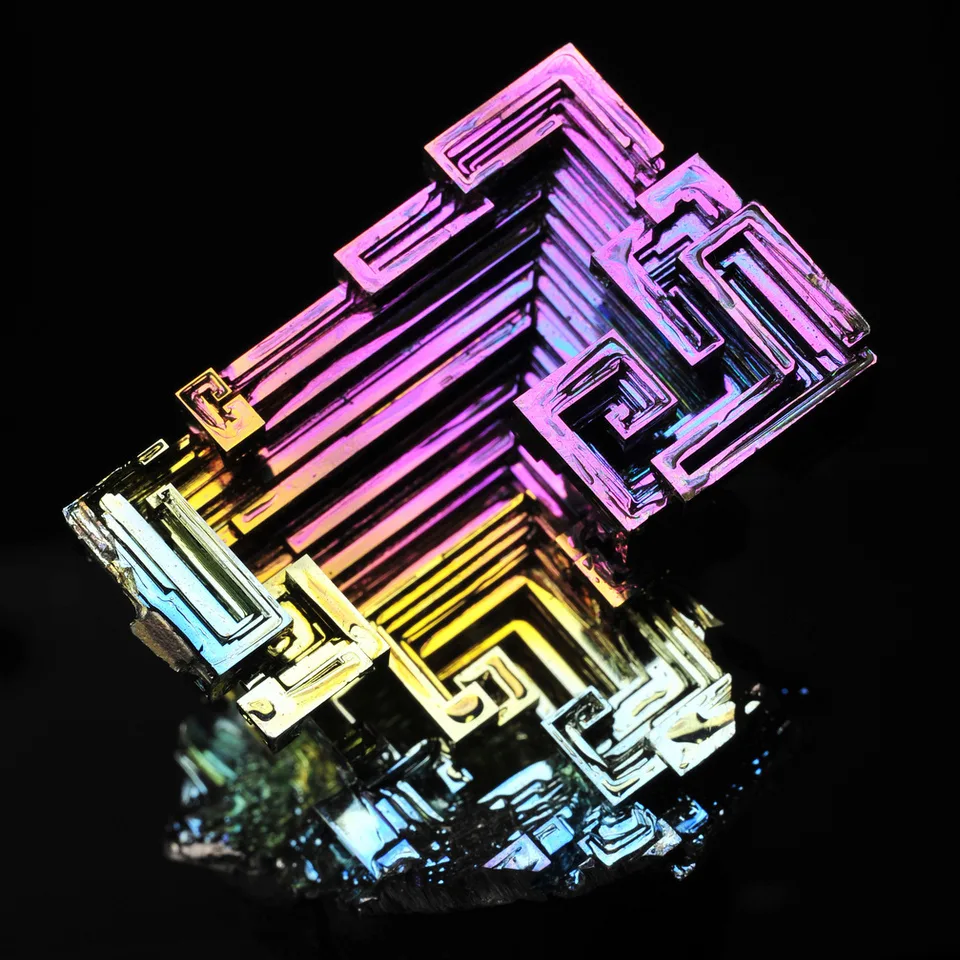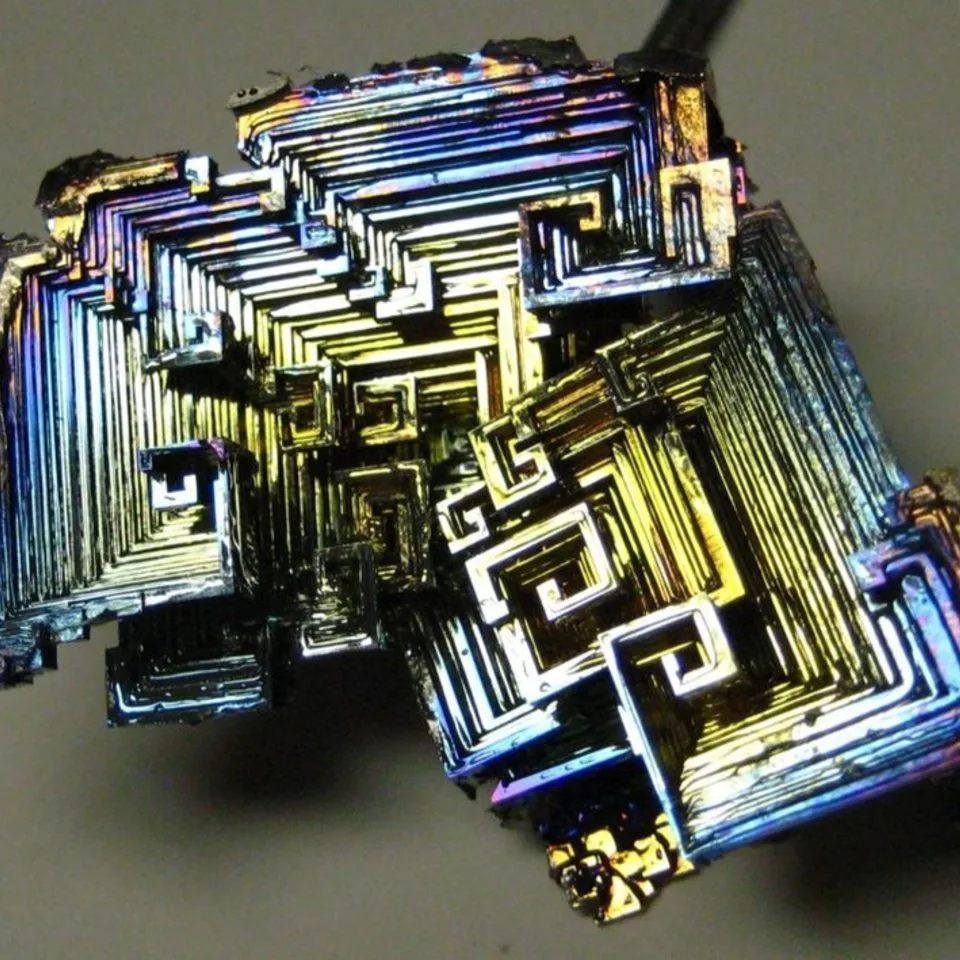Bismuth
Bismuth is a chemical element with symbol Bi and atomic number 83. Bismuth, a pentavalent post-transition metal, chemically resembles arsenic and antimony. Elemental bismuth may occur naturally, although its sulfide and oxide form important commercial ores. The free element is 86% as dense as lead. It is a brittle metal with a silvery white color when freshly produced, but is often seen in air with a pink tinge owing to surface oxidation. Bismuth is the most naturally diamagnetic element, and has one of the lowest values of thermal conductivity among metals.
Bismuth metal has been known from ancient times, although until the 18th century it was often confused with lead and tin, which share some physical properties. The etymology is uncertain, but possibly comes from Arabic bi ismid, meaning having the properties of antimony or German words weisse masse or wismuth (“white mass”), translated in the mid-sixteenth century to New Latin bisemutum.
Bismuth has long been considered as the element with the highest atomic mass that is stable. However, in 2003 it was discovered to be slightly radioactive: its only primordial isotope, bismuth-209, decays via alpha decay with a half life more than a billion times the estimated age of the universe.
Bismuth compounds account for about half the production of bismuth. They are used in cosmetics, pigments, and a few pharmaceuticals, notably Pepto-Bismol, used to treat diarrhea. Bismuth’s unusual propensity to expand upon freezing is responsible for some of its uses, such as in casting of printing type. Bismuth has unusually low toxicity for a heavy metal. As the toxicity of lead has become more apparent in recent years, there is an increasing use of bismuth alloys (presently about a third of bismuth production) as a replacement for lead.
Bismuth is a brittle metal with a white, silver-pink hue, often occurring in its native form, with an iridescent oxide tarnish showing many colors from yellow to blue. The spiral, stair-stepped structure of bismuth crystals is the result of a higher growth rate around the outside edges than on the inside edges. The variations in the thickness of the oxide layer that forms on the surface of the crystal causes different wavelengths of light to interfere upon reflection, thus displaying a rainbow of colors. When burned in oxygen, bismuth burns with a blue flame and its oxide forms yellow fumes. Its toxicity is much lower than that of its neighbors in the periodic table, such as lead, antimony, and polonium.
No other metal is verified to be more naturally diamagnetic than bismuth. (Superdiamagnetism is a different physical phenomenon.) Of any metal, it has one of the lowest values of thermal conductivity (after manganese, and maybe neptunium and plutonium) and the highest Hall coefficient. It has a high electrical resistance. When deposited in sufficiently thin layers on a substrate, bismuth is a semiconductor, despite being a post-transition metal.
Elemental bismuth is denser in the liquid phase than the solid, a characteristic it shares with antimony, germanium, silicon and gallium. Bismuth expands 3.32% on solidification; therefore, it was long a component of low-melting typesetting alloys, where it compensated for the contraction of the other alloying components, to form almost isostatic bismuth-lead eutectic alloys.
